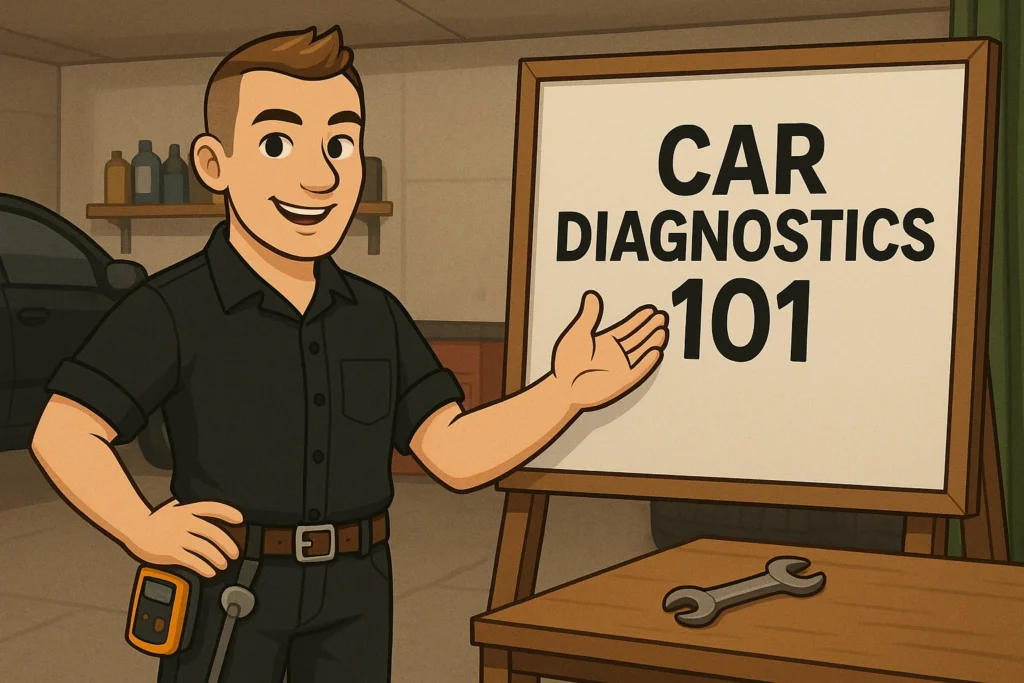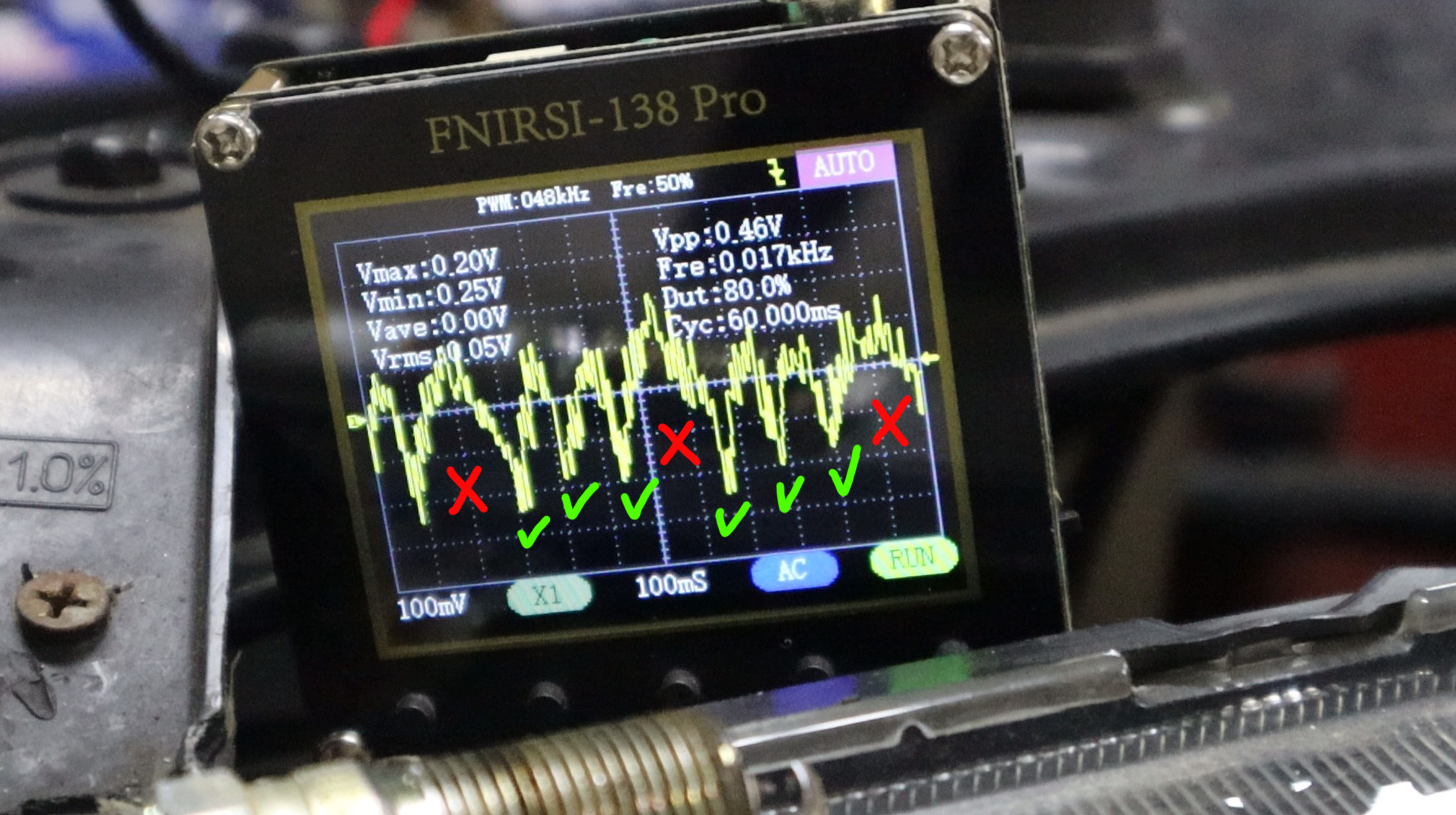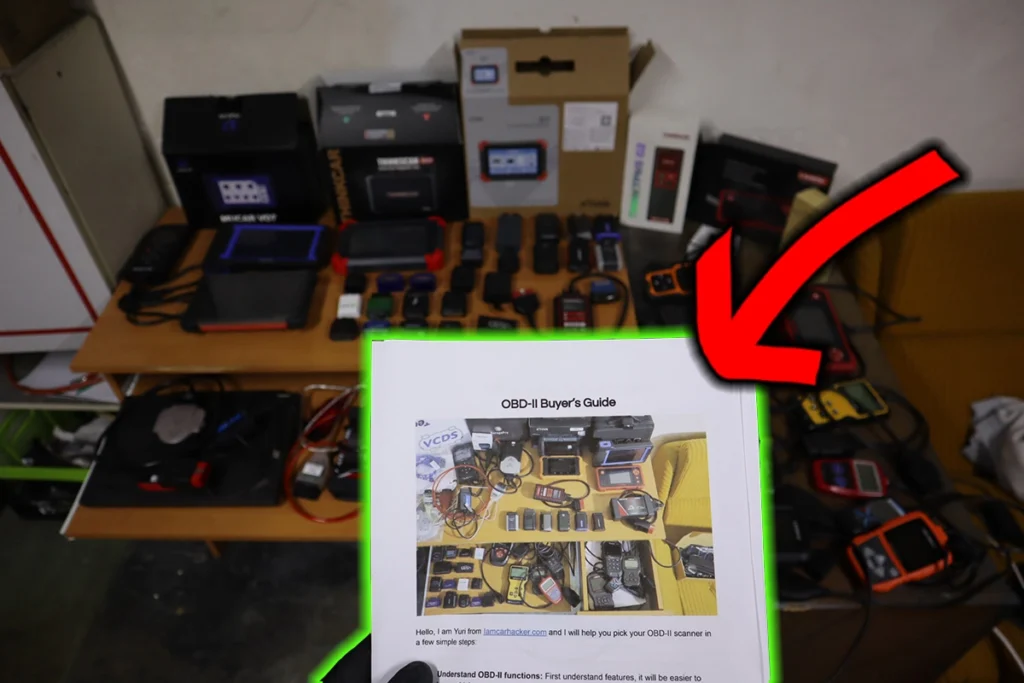Here’s a cool trick — you can use your oscilloscope to check your engine’s compression without removing a single spark plug.
It’s called a relative compression test, and it’s fast, clean, and super useful.
How It Works
When your engine cranks, each cylinder’s compression stroke makes the starter motor work harder — this pulls more current and causes a small dip in battery voltage.
A weak cylinder (low compression) won’t dip as much.
Your oscilloscope shows these dips — so you can spot if one cylinder is weaker than the others.
What You Need
- A single-channel oscilloscope
👉 Here are my top oscilloscope picks (starting at $35) - A way to disable the engine (pull fuel pump and ignition fuses)
- Fully charged battery (use a charger if needed)
Steps to Do It
1. Disable the Engine
You want it to crank, but not start. Pull the fuel pump fuse or ignition coils.
2. Hook Up the Scope
Connect probe across the battery (positive to positive, ground to negative)
3. Set Your Scope
- AC Coupling
- Voltage: ~100 mV/div
- Time: 100–200 ms/div to capture full cranking pattern
4. Crank the Engine for 5–10 Seconds
Watch the waveform build on screen, then freeze it.
What You’re Looking For
- Good engine? All voltage dips are even = compression looks equal
- One dip shallow? That cylinder has lower compression
You won’t know which cylinder unless you add a trigger signal — but you’ll know something’s off. Fast, easy way to check engine health before pulling tools.
—
Yuri

*This post is an email from my free DIY mechanic newsletter. Become a DIY mechanic in just 10 minutes per day. Sign up here.

Hi, I am Juraj “Yuri” Lukacko. I got frustrated by unhelpful and scammy mechanics, so I decided to learn everything about car diagnostics myself. I test dozens of new car diagnostic tools every month along with learning new strategies to fix and customize cars. About Juraj Lukacko (Yuri)

